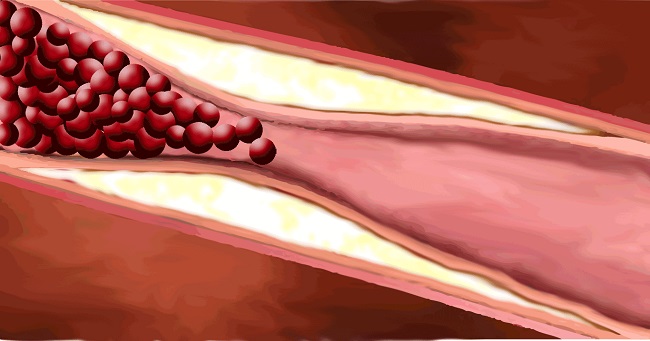Positive Health Online
Your Country

Don’t Feed Back Pain
listed in back pain, originally published in issue 228 - February 2016
Back pain! I have written about it many times in this magazine. I have spoken too of my thoughts on the main cause of muscle and joint pain, primarily due to the compressive forces of our muscular chains. This insight into this game changing way of looking at musculoskeletal disorders was discovered by the famous French physiotherapist Françoise Mézières. I must stop here before I get carried away by my enthusiasm for Ms Mézières’ method and instead ask you to consider a much ignored cause of back pain: the vascular one!
The French say ‘On a l’âge de ses artères’ (one is as old as his arteries). There is a lot of truth in this observation. Consider for a moment that if you were to stretch out all of your blood vessels in a line they would extend to about 60,000 miles. That is a lot of tubing. And this intricate system of tubes, our plumbing system if you like, plays a vital role in maintaining a healthy body. Our arteries supply essential nutrients such as oxygen and glucose to all the cells in our body. Our blood vessels are also tasked with removing metabolic waste such as lactic acid.

Atherosclerosis is the thickening of arteries caused by a build up of cholesterol and fat. Eventually, this build up of unwanted particles forms plaques that clog the arteries and obstruct blood flow. We usually associate the word atherosclerosis with coronary artery disease and its often fatal outcome: heart attack, the number one killer in developed countries.
But plaque does not have an affinity solely with the arteries in the chest. It is not selective. If your diet is conducive to the clogging of your arteries, the damage will be systemic and affect the whole of your vascular system.
Atherosclerosis is responsible for a whole host of diseases. The symptoms depend on the site of the blockage. For instance, blocked arteries to the brain may lead to a thrombotic stroke; to the kidneys, renal failure; to the leg, claudication; to the inner ear, tinnitus, dizziness and hearing loss; to the eye, macular degeneration; to the penis, erectile dysfunction (impotence). And, you guessed it, clogging of the arteries leading to the lower back can cause lower back pain and disc degeneration. Indeed, on post-mortem and clinical studies a strong and consistent association has been shown between atherosclerosis and such back problems.
Let us then examine the mechanism by which atherosclerosis can lead to lower back pain or disc degeneration. Blood supply to the vertebrae is from segmental arteries. In the lumbar region, paired lumbar arteries that arise from the posterior wall of the abdominal aorta feed the first to the fourth lumbar segments while the fifth is supplied by the middle sacral artery which originates in the aortic bifurcation and by tributaries of the iliolumbar arteries. In addition to feeding lumbar vertebrae, these arteries also supply intervertebral discs, nerve roots and paraspinal muscles. Lesions (fibrous plaques) tend to build up where the abdominal aorta forks and at the site of orifices or in the proximal part of branching arteries. The most common sites of blockages occur in the arteries which feed the fifth and fourth lumbar segments. It seems that it is no coincidence that this is the area of the back which is most complained about because of lower back pain and disc degeneration.
When these arteries are clogged or blocked, blood supply is compromised leading to symptoms of an ischemic nature such as constant dull pain in bone ischemia or nerve pain such as sciatica in root ischemia.
The intervertebral disc tends to age and degenerate much quicker than other musculoskeletal tissues. The first signs of disc degeneration in the lumbar region can be seen in children as young as 11 years of age. In the developed countries, lower back pain is now common in children and teenagers to the point of becoming a public health concern. It is no coincidence that most kids in developed countries have signs of atherosclerosis by age 10. The ground for heart attacks, strokes and back pain is prepared in infancy.
One reason why the disc is especially vulnerable is because it is made up of avascular tissue meaning that it is not fed directly by blood vessels but relies instead on diffusion at the disc’s margins for its nutrition. A fall in nutrient supply to the disc leads to cell death, loss of matrix production and finally to disc degeneration. Degenerative changes in the disc result most commonly in bulges or ruptures leading to a herniated or prolapsed intervertebral disc.
Disc degeneration and lower back pain are often multifactorial. Combining tight muscular chains and clogged arteries is a recipe for disaster in the lumbar region. We know that back problems are the second leading cause of disability (arthritis has the number one slot) and cardiovascular diseases the third in the developed world. Armed with this information and the knowledge of the strong connection between these diseases, surely it is prudent to adopt a lifestyle which could prevent or reverse these debilitating conditions.
What is one to eat or not to eat in order to have smooth and open arteries or to clean them up if they are obstructed? It is very simple. Our bodies are capable of making all the cholesterol we need. Any cholesterol we eat is too much. All animal products contain cholesterol and saturated fats, the very stuff that clogs the arteries. Plants do not contain cholesterol. If you want to prevent or reverse atherosclerosis the only sane option is to adopt a whole food plant-based diet.
If you care about what you put on your fork you will not have to go under the knife for your back pain.
Comments:
-
No Article Comments available